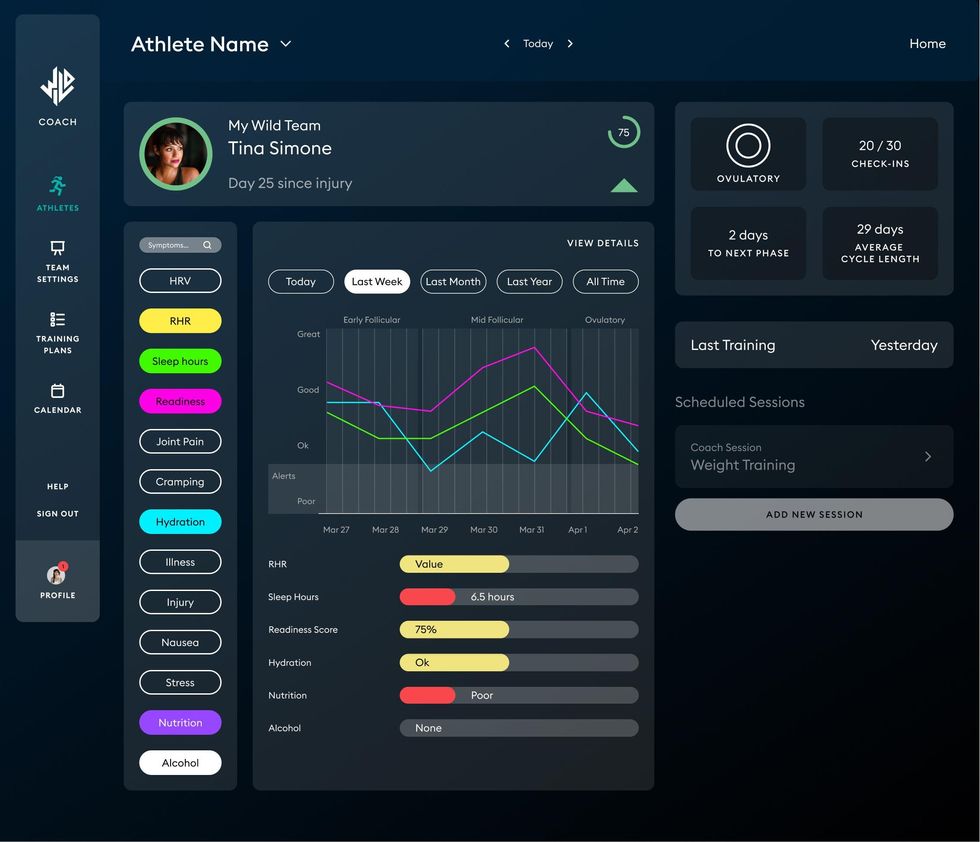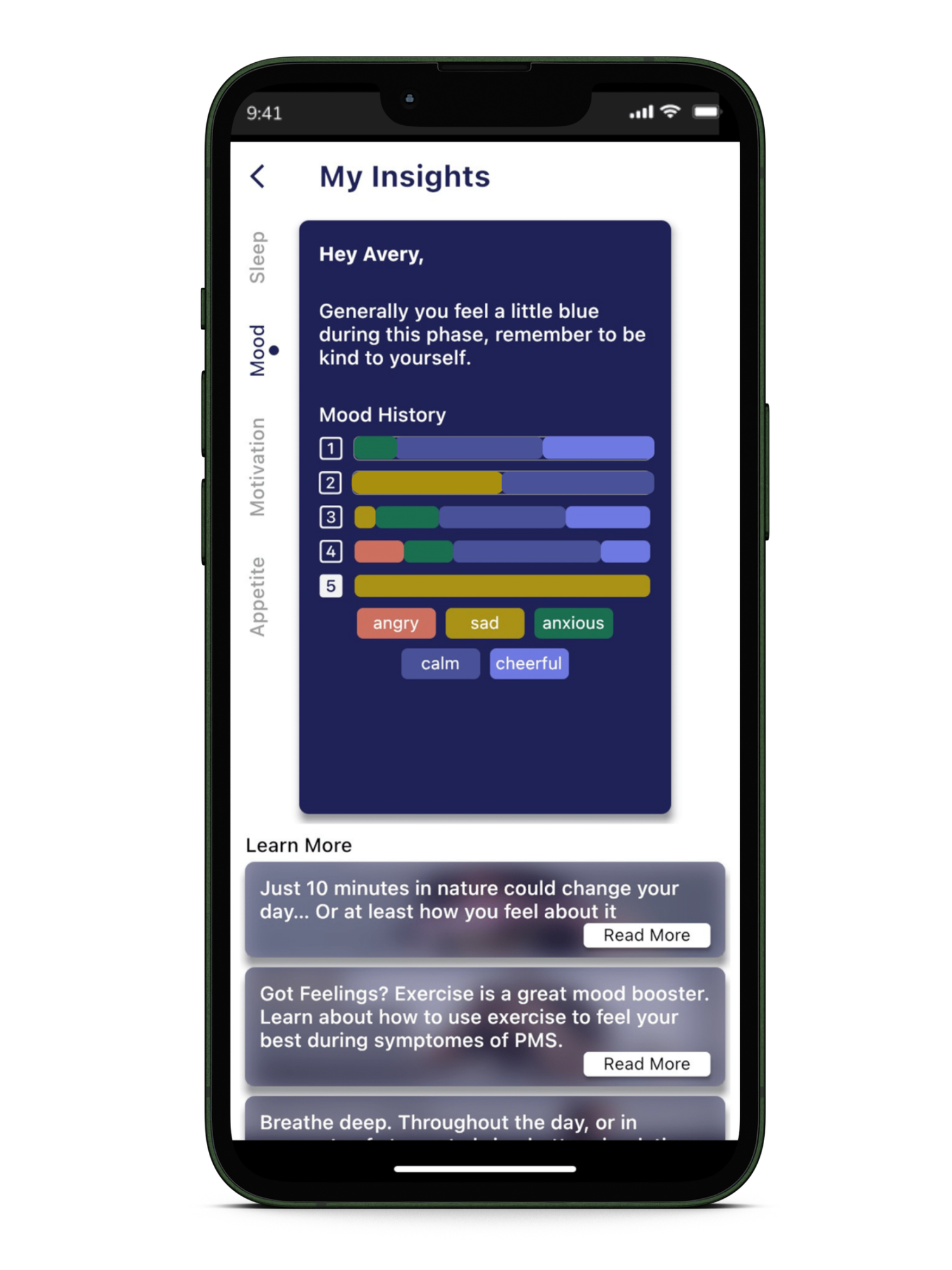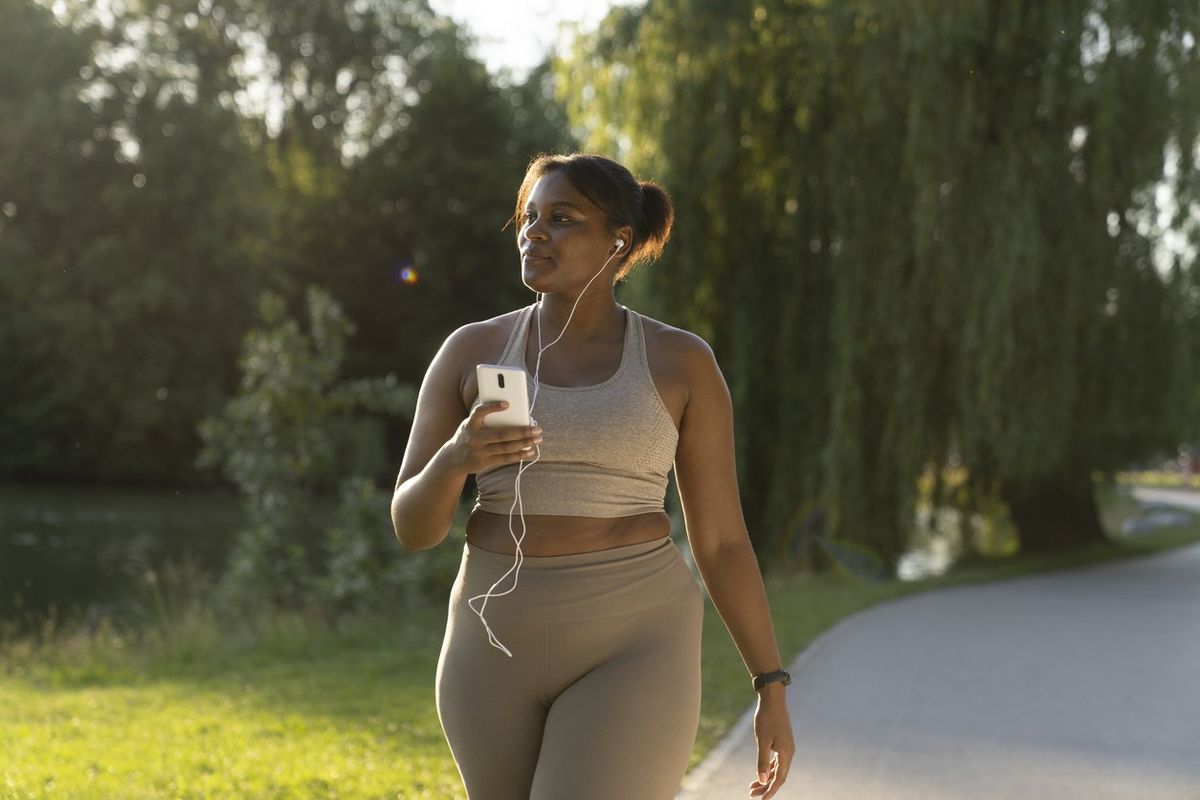Brittany Barreto, Ph.D., is a podcaster, an entrepreneur, and a molecular and human geneticist. (In other words, she’s really smart.) Read her column here each month to learn about what’s happening in the world of technology and innovation in women’s health.
Have you ever left Zumba absolutely glowing and feeling like the fittest version of yourself? Then the following week you’re dragging your body out of the class wondering how you survived. This fluctuation in energy may be linked to where you are in your menstrual cycle.
Shifting hormones can affect your body’s ability to recover after a workout at certain points in your cycle. Your cycle may also offer opportunities to capitalize on certain training types. Across the four phases of the menstrual cycle, the body’s fueling requirements also shift.
Here are four innovative companies that are powering up women’s fitness by harnessing the power of their periods.
1. Jennis — a fitness app for the everyday menstruator
Created by a former gold-winning olympian, Jessica Ennis-Hill, the Jennis app uses the latest hormonal health science to suggest what foods to eat and exercises to do in order to get the most out of your fitness journey and improve your health overall. But don’t be intimidated by the athletic abilities of its founder! The app is for the everyday person who’s trying to stay active and healthy.
Jennis has customized programs for people who are menstruating and perimenopausal. Cycle Mapping (tracks estrogen and progesterone through the month) is provided to optimize nutrition and workouts based on which of the four phases of the menstrual cycle you’re in. The perimenopausal program takes into account typical hormonal fluctuations and symptoms. And it structures a daily food and workout program that is intended to keep your body healthy while reducing perimenopausal symptoms such as changes in mood, hot flashes and disrupted sleep.
2. Wild.AI — an app for the female athlete

(Photo/Courtesy Wild.AI)
Do you have an upcoming half marathon or have you just signed up for a trainer to help you meet your fitness goals? Wild.AI provides custom training intensity, duration and recovery plans based on your menstrual cycle — from your first period to perimenopause all the way to postmenopause. This app is ideal for people who want to advance their training and achieve their fitness goals sooner by using their hormones to their advantage.
Read: Menopause Got You Down? There’s an App For That.
Women’s bodies significantly change throughout their menstrual cycle. We’re not showing up to the gym or even a meal with the same biology every day. For example, you’re more likely to beat your personal record during ovulation because of the high energy caused by the estrogen peak. And research suggests that female athletes are more prone to ACL tears during the end of the follicular phase (the longest phase of your menstrual cycle) because the rise in progesterone increases how far your ligaments can stretch (fancy term for that = laxity). The thought is that if we take our daily biology into account, we can stay healthier, train harder and see better results in less time.
You can easily sync the app and wearables data to your profile. Wild.AI offers both paid and free plans for consumers, and the app also offers software for coaches and nutritionists to use their scientifically based workout and nutrition plans for their clients.
3. My Normative — an app to track what’s normal for your period

(Photo/Courtesy of My Normative)
My Normative empowers women to find their normal. The lack of research on women’s health has led to misguided assumptions of what is average for any one woman. For example, only 13% of women have a 28-day menstrual cycle, which is considered “normal” or “average.” So we could all benefit from finding out what our personal baselines are and assessing our health based on what “normal” is for us.
When you use the app, you can enter all types of information about how you’re feeling, what you’ve eaten and what activities you’ve performed. This info is displayed visually on a map of the menstrual cycle making it easier to spot patterns and trends. The app continues to learn and provides insights into what your personal patterns are.
Another unique feature: you can enroll in clinical research projects where your de-identified data (meaning, it’s stripped of your personal details) can contribute to science. For example, users have contributed to research on hormone variability in high performance athletes, how premenstrual syndrome (PMS) can affect health and wellness, and novel ovulation research.
We continue to see new innovation as we learn more about how the female body works. Sports, fitness and nutrition have historically been based on a male standard. But as we can see from the examples above, the future of women’s health will incorporate hormone fluctuations and other issues specific to women and people assigned female at birth. We may one day look back at what we suggested women should eat and do to be healthy and shake our heads that those plans did not include the menstrual cycle. Luckily, the future is closer than ever before.
The information about products and/or services in this column does not constitute any form of endorsement or recommendation by HealthyWomen. Links are provided as a convenience and for informational purposes only. This column may occasionally cover companies in which Brittany Barreto is an investor.
- Clinically Speaking: Questions to Ask Your Healthcare Provider About Periods ›
- 6 Awesome Apps for Weight Loss ›
- Menopause Got You Down? There’s an App For That. ›
- Fun Fitness Trends for 2024 - HealthyWomen ›
- Facts About TikTok Trends in Fitness - HealthyWomen ›







